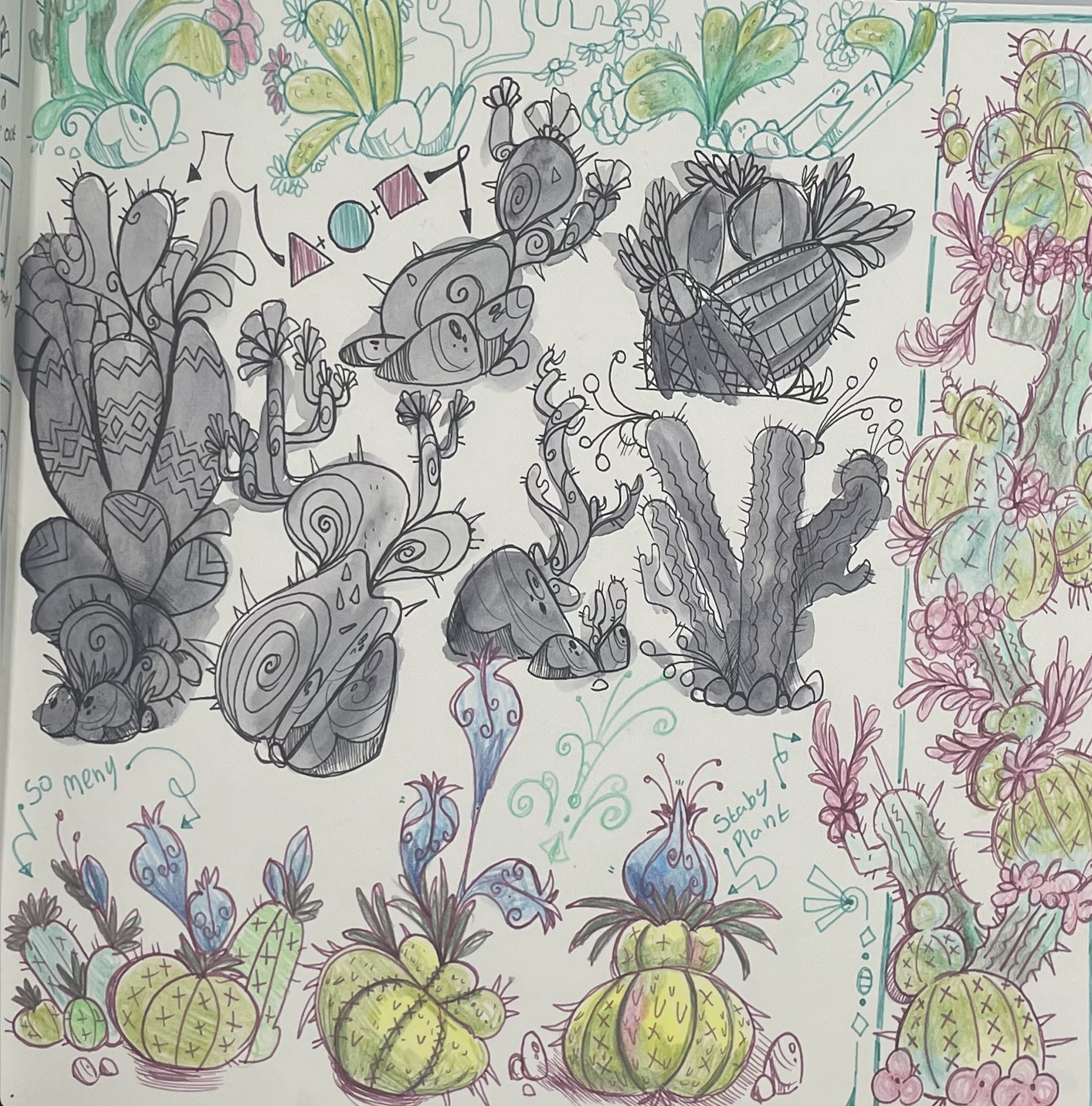Throughout my travels, I have undertaken a character design project known as 'Around the World.' This challenge pushes me to create unique characters every time I visit a new location, whether for leisure, family visits, or exploration within the UK. Like any worthwhile endeavor, this project adheres to a set of rules that guide each design.
1) Design a minimum of three characters per location.
2. Base characters on the local geography, culture, or mythology.
3. Incorporate facial features, characteristics, and cultural elements of the local people into the designs.
4. Characters can represent humans, monsters, animals, or other entities, but must reflect the overarching culture.
5. Explore shape language and color palettes influenced by the local culture.
6. Complete each design within two weeks of returning from the trip
Rules:
Malta Characters 2023
Motor is a small island country in the Mediterranean Sea, located south of Sicily and north of Libya, the country itself is a melting pot of different ethnicities cultures combining and fusing together into its own unique culture history and mythology. The character designs that I have created after this trip are based on the three main experiences I had in the country.
The Mermaid (Triton)
Malta is a small island surrounded by the sea. The hotel I stayed at during my trip was located seaside, with the decor and architecture featuring creatures known as "Triton," which are similar to mermaids. These Triton creatures can also be seen on the Malta City Fountain, depicted as three bronze figures symbolising Malta's protection and strength as a country.
My version of Triton is a concierge who protects the people with in his hotel and provides the highest level of respect, personality was influenced by the amazing staff at the hotel who provided me key information about the island and the historical context of the tritons. furthermore my Triton is heavily inspired by the traditional appearance of these creatures especially the split tails decorate to fin legs the one thing I wanted to add to their design was the idea that the fish part that's one self-contained section and not segmented with his head being a completed fish creating the illusion that a fish grow body legs and torso after coming to the surface.
The Fertility Goddess
The Ġgantija Temples in Gozo, Malta, are steeped in legend, associated with a tale of a giantess who constructed them. Dating back to 3600-2500 BC, these temples were believed to be used for ritualistic practices, including animal sacrifices and fertility rites dedicated to a mother goddess. Within the temple, a variety of artifacts were found, including figurines of fat ladies made from clay and pottery, showcasing cultural elements such as hairstyles, body types, and facial features. These figures served as the initial inspiration for the design of my goddess character.
Drawing on the significance of the Malta clay figures and their connection to motherhood, I incorporated elements such as stretchmarks, inspired by the cracks found in clay, across the goddess's body. Embracing the theme of naturalism, I took cues from Gaia, with trees and plants, particularly local vegetation like cactuses and prickly pears, growing from her head to form her hair. The character design features soft, rounded edges and circles, with spirals as a recurring motif, creating a warm and huggable appearance.
The goddess character embodies a caring and nurturing maternal figure, whose role is to guide and support young mothers and those seeking parental guidance. This version of the goddess extends her support to all forms of motherhood, not limited to those trying to conceive. She is depicted as the type of woman who would offer respite by caring for a baby, nurture an abandoned child, and provide assistance to an elderly mother, embodying a universal and compassionate maternal presence.
The Malta Carnival, “ Il-Karnival Ta'Malta” , is an annual event that typically takes place before Lent in early February. During my trip, I had the opportunity to partake in this week-long celebration. The festival features a variety of celebratory activities, including parades, dancing, and plays, all filled with creativity and joy. Known for its vibrant colors and intricately designed costumes, the event presents an interesting contrast for such a grand festival. Dating back to the 16th century when the Knights of St. John introduced it to Malta, the carnival signifies the final indulgence before the commencement of Lent, a period of fasting and abstinence for many, particularly from meat and sweets. It serves as a time for merriment, revelry, and uninhibited enjoyment before the solemn observance of Lent.
At the heart of the festival lies the embodiment of cultural diversity and creativity, personified in the character known as the Jester of the Carnival. This singular costumed figure stood out in the 2022 festival, incorporating various elements such as garish colors of bright pinks, blues, and yellows. The character's physique draws inspiration from the fluid, unrestricted movements seen in the festival, never quite tethering itself to a physical surface. Additionally, the design is influenced by the elaborate headdresses worn by many dancers during performances, emphasizing freedom of movement and expression. These costumes were meticulously crafted to allow for fluidity and expressiveness, qualities that I have endeavored to capture in my character's design.













